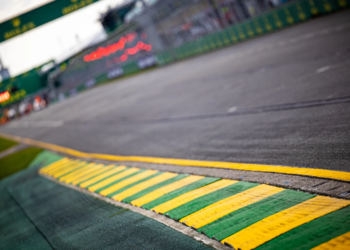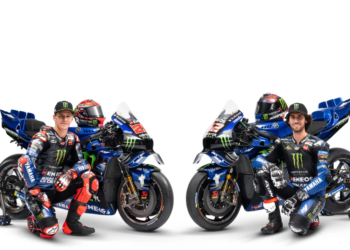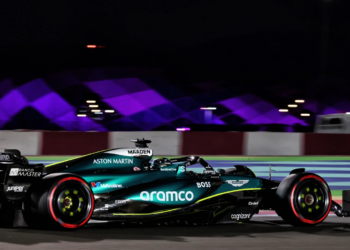The NTT IndyCar series is on the rise. Nine of the 16 races in 2018 saw an increase in attendance from the previous year, and the relatively low entry costs mean more teams and more new drivers are heading to the sport. Figures from IndyCar show television viewing figures have grown by 38% over the past five years, and with the likes of McLaren and Fernando Alonso getting involved, worldwide interest is expanding.
With more interest, there may be more races. Current IndyCar CEO Mark Miles has said: “I would expect us to see try to get a couple more international races in earlier in the season”. One of those is expected to be the return of Surfer’s Paradise in Australia, but with IndyCar’s new title sponsorship deal with Nippon Telegraph and Telephone (NTT), could IndyCar also return to the Land of the Rising Sun?
The series has been to Japan before, at the Twin Ring Motegi circuit, more familiar in recent times to fans of MotoGP. This track was opened in 1997, after a construction period of several years. The circuit, owned by Honda, is so named because of two circuit configurations; a one and a half mile oval and a road course of just under three miles in length. The construction of the course was in part related to IndyCar, with Honda’s 1994 decision to design and build engines for the CART series thought to have been a factor in the final sign off of the works.
IndyCar first raced on the oval circuit in 1998 under the CART moniker, with Adrian Fernandez winning the inaugural race. A crowd of 61,000 at the 1999 running underlined the event as a success, and by 2003 when the rebranded Indy Racing League started to visit, none other than Tony George described the track as “one of the finest ovals in the world”. The late Dan Wheldon claimed the first ever Honda-powered win at their home circuit in 2004.

Perhaps the most famous IndyCar moment at the track was Danica Patrick’s first (and only) IndyCar win which came in 2008, in a 300-mile race dominated by fuel strategy. Passing Helio Castroneves with two laps to go as others dived to the pits for fuel, Patrick told reporters, “When I passed him for the lead, I couldn't believe it. This is fabulous… I knew there was a good reason for coming to Japan.” Nicely put, Danica. She remains the only woman to have won an IndyCar race.
2011 has been described in some quarters as ‘the year a lot happened’, and whilst world events such as the Arab Spring in the Middle-East and the Royal wedding in England might not have had much effect on IndyCar, the Japanese earthquake and subsequent tsunami of 11th March certainly did. The tremors and aftershocks damaged the oval circuit, having formed ‘waves’ on the surface, to such an extent that it was deemed unsuitable for racing use.
IndyCar was due to visit the circuit in September of that year, but with the oval out of action, a decision was made to switch to the road course layout instead, a decision which left many fans grumbling.
However, that wasn’t the main focus of media attention before the race. The Fukushima Daiichi nuclear power plant, scene of three nuclear reactor meltdowns after the March tsunami, is located barely 90 miles away, and some drivers and team members were said to have quiet reservations about visiting the area due to warnings about radioactive contamination of the food chain.
Then-CEO of IndyCar Randy Bernhart insisted that due diligence and safety checks had been performed and that they owed it to the Japanese people to honour their contract and put on a good show. But Danica Patrick was quoted as saying “I'm concerned about the food, to be honest… They say, 'Don't eat beef,' which probably means don't eat vegetables and fruit… And there's earthquakes. Like every week. And it seems like every other week, there's a pretty big one.”

Apparently, Patrick ended up bringing her own food and water supplies, whilst some other drivers, keen to be seen as a positive story for a country trying to get back on its feet, were reportedly unhappy about the negative comments she’d made. But whatever the fuss, the race went ahead and Scott Dixon took the win.
And that was the final IndyCar race in Japan. The contract was up, and with the series in a fragile state, it had already been decided there wouldn’t be any extension. MotoGP has continued to race on the Motegi road course in the intervening years without any earthquake-related issues.
The oval course doesn’t appear to be in such bad shape. Takuma Sato ran his IndyCar around the track at speed as part of Honda’s ‘Thanks Day’ event in 2017, and the circuit has confirmed to Motorsport week that the oval course is “not damaged… but we don’t use it for racing now”. This suggests that if any repairs are needed, the costs should be reasonable.
Could IndyCar return to the circuit? With track-owner Honda still heavily involved as an engine supplier and NTT the new series sponsor, quite a few of the pieces seem to be in place if the desire – and money – is there. If the race was run on a repaired oval, then it would be another sign of resurgence for both the region and the NTT IndyCar series.
Timing and climate appear to be the major issues. With an early season race slot mooted for February, the Japanese winter is probably not the best environment for racing IndyCars.
Only time will tell if solutions can be found, but perhaps the following Japanese-sounding wisdom applies. Life is very much like circuit racing – given enough time, everything goes round in circles.







